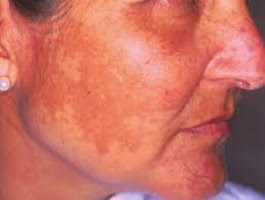
Characterized by brown, gray, or tan patches of skin, the discoloration of melasma is often associated with pregnancy. However, this skin condition can develop at any point in a person’s lifespan. Melasma most commonly affects females ages 20 to 50 and is usually evident on the cheeks, jawline, and other parts of the face. Get the facts behind these three other common melasma myths.
Myth: Strong Cleansers and Harsh Scrubbing Can Reduce Melasma Spots
While popular misconception suggests that strong chemical exfoliants and frequent rough scrubbing can eliminate melasma, these steps will actually damage sensitive, fragile skin. The resulting irritation can even worsen discoloration. If your face stings or burns after introducing a product, eliminate it from your skincare routine.
Myth: No Treatment Exists for Melasma
In fact, several treatment options can reduce the darkened, discolored areas caused by melasma. Depending on a client’s aesthetic goals and health status, we may recommend topical medications to even skin tone. Hydroquinone produces results for many individuals, often combined with tretinoin and/or corticosteroids for maximum effect. Some clients also see improvement in melasma symptoms with products containing vitamin C, kojic acid, or azelaic acid. When the discoloration persists, we can often use dermabrasion, microdermabrasion, or chemical peels to help reduce the appearance of dark spots.
Myth: Melasma Will Not Return
Whether melasma patches respond to treatment or fade on their own, this condition can recur with sun exposure, hormone changes, and other environmental and biological triggers. To help prevent a return of melasma discoloration, shield the face from UV rays with sunscreen of at least SPF 30 and a wide-brimmed hat whenever you go outdoors.
At The Dermatology Clinic, we can provide a thorough evaluation and recommend an appropriate course of treatment for melasma. Call (225) 769-7546 to schedule a visit or request your appointment online today.
